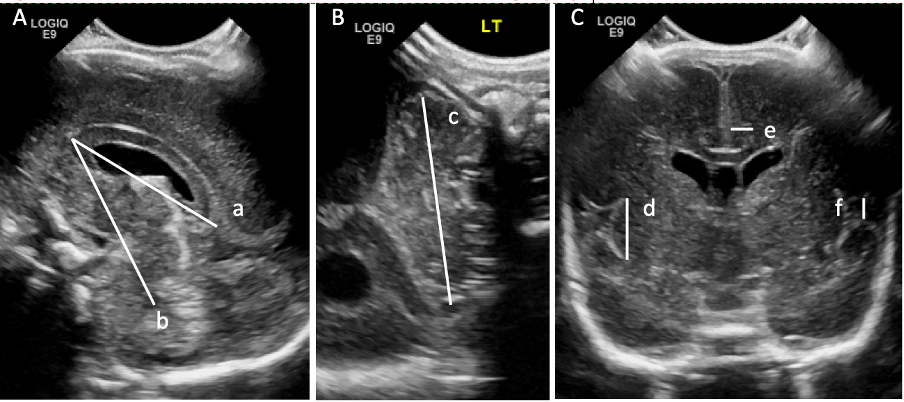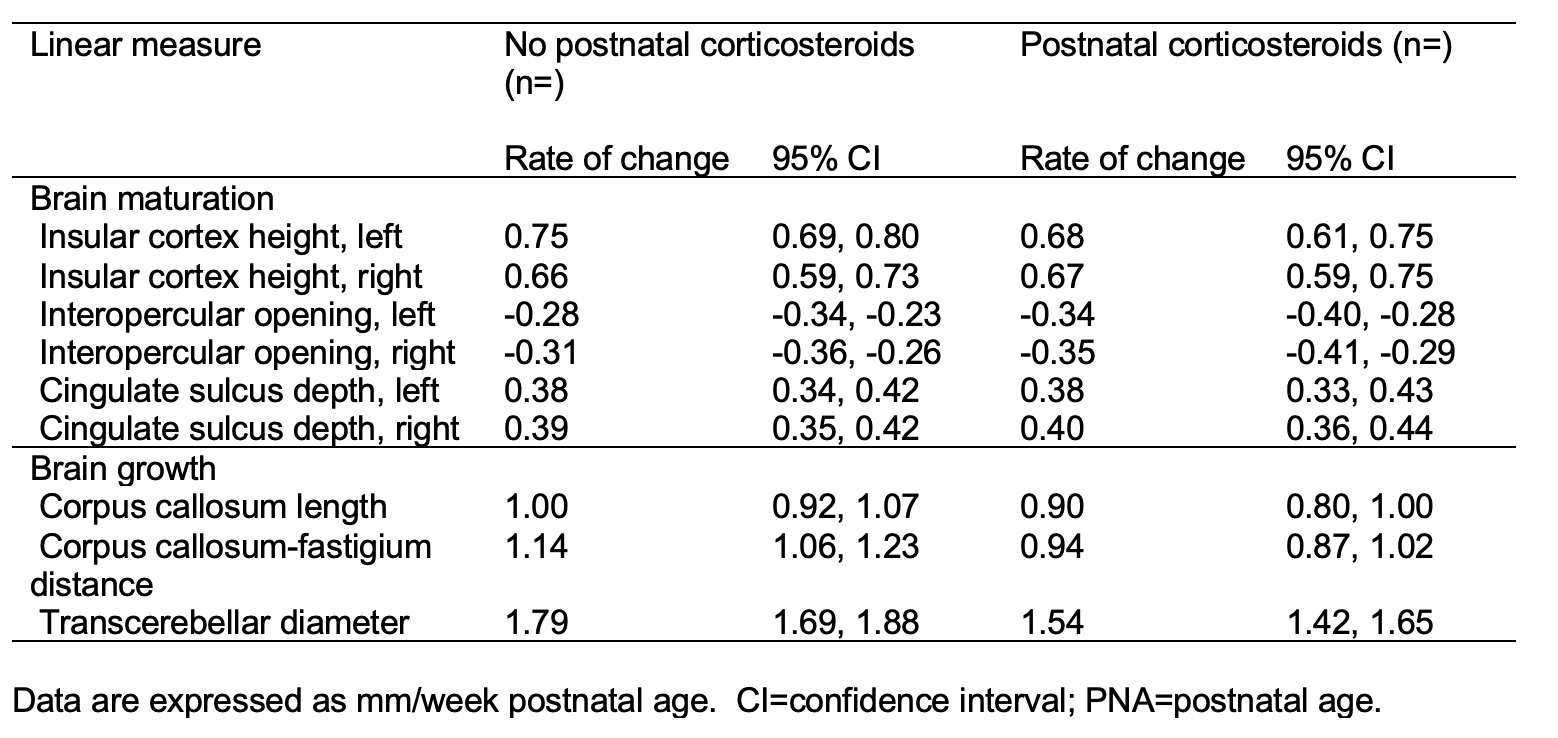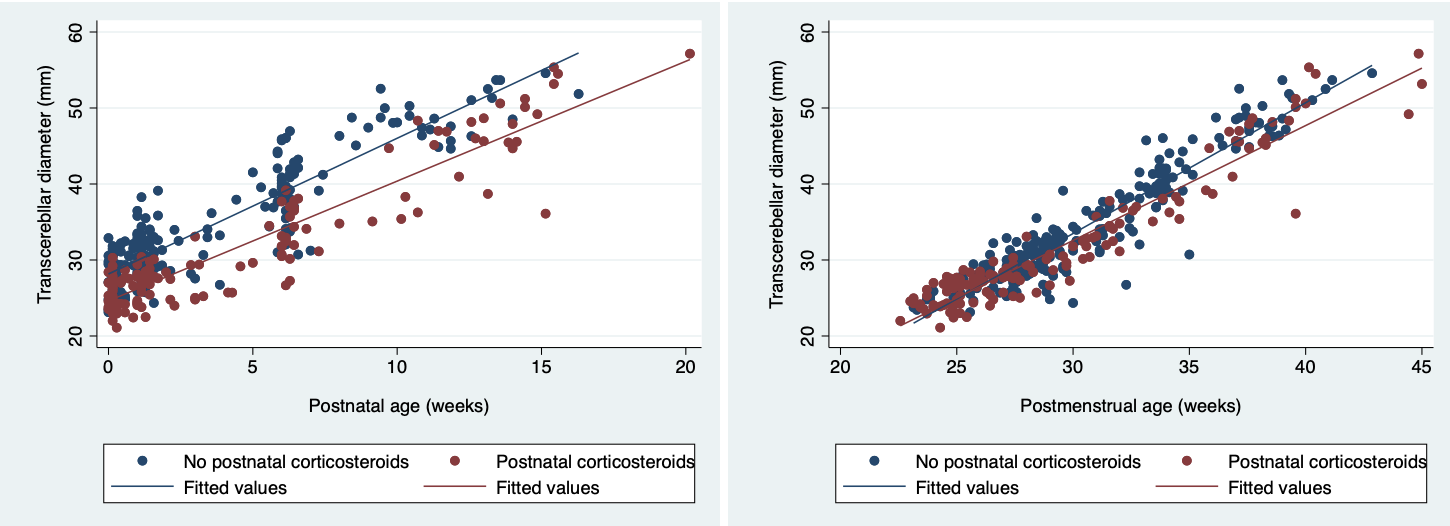Neonatal Neurology 1
Session: Neonatal Neurology 1
340 - Associations of Postnatal Corticosteroid Exposure with Early Postnatal Brain Growth and Maturation in Extremely Preterm or Extremely Low Birth Weight Infants
Friday, April 25, 2025
5:30pm - 7:45pm HST
Publication Number: 340.3955
Lucia McLean, The Royal Women's Hospital, Carlton, Victoria, Australia; Brett J. Manley, Mercy Hospital for Women, Melbourne, Melbourne, Victoria, Australia; Louise S. Owen, Royal Women's Hospital, Melbourne, Melbourne, Victoria, Australia; Peter Davis, Royal Women's Hospital, Melbourne, Victoria, Australia; Rocco Cuzzilla, The Royal Women's Hospital, Parkville, Victoria, Australia
.jpg)
Lucia McLean, BSc (Hons), MD (she/her/hers)
Neonatal Fellow
The Royal Women's Hospital
Carlton, Victoria, Australia
Presenting Author(s)
Background: Postnatal corticosteroids are commonly used to prevent and treat bronchopulmonary dysplasia (BPD). Both BPD and postnatal corticosteroid exposure are associated with adverse neurodevelopment. Longitudinal measures of brain growth and maturation may provide an insight to the relationship between postnatal corticosteroid exposure and later neurodevelopment.
Objective: To compare brain growth and maturation using cranial ultrasonography (cUS) linear measures in extremely preterm or extremely low birth weight infants exposed or not exposed to postnatal corticosteroids.
Design/Methods: Retrospective observational study of infants born < 28 weeks’ gestation or < 1000 g consecutively admitted to a single centre in 2021. Infants with congenital or genetic anomalies likely to affect brain growth or who died before admission or first cUS were excluded. Scans performed after development of major preterm brain injury were excluded. Linear measures (Figure 1) reflecting brain growth and maturation were made on cUS performed as part of clinical care. Imaging was routinely performed at, or around, postnatal days 1, 7-10, 42, and at term-equivalent age. Additional scans were performed as clinically indicated. Linear regression using mixed models were used to assess rates of change for each linear measure with respect to postnatal age (PNA) (weeks) with and without exposure to postnatal corticosteroids, adjusted for gestation.
Results: 363 scans were assessed, including 141 scans for 37 infants exposed to postnatal corticosteroids, and 222 scans for 76 infants not exposed. The corpus callosum length (CCL), corpus callosum-fastigium distance (CCF), transcerebellar diameter (TCD), insular cortex height (ICH) (left and right) and cingulate sulcus depth (CSD) (left and right) increased, and the interopercular distance (IOD) (left and right) decreased, with both PNA (Table) and PMA (not shown), with or without exposure to postnatal corticosteroids. Measures of brain maturation (ICH, CSD and IOD) did not change with or without exposure to postnatal corticosteroids. Measures of brain growth showed slower rates of change with PNA (Table and Figure 2) in infants exposed to postnatal corticosteroids compared with those not exposed.
Conclusion(s): Postnatal corticosteroid exposure was related to slower rates of change in measures of brain growth. There was no evidence of any relationships between measures of brain maturation and postnatal corticosteroid exposure.
Brain measures made on cranial ultrasonography
 Cranial ultrasound linear measures of brain growth (A and B) and maturation (C). Images taken through the anterior fontanelle in the midsagittal plane (A) and coronal plane at the level of the foramina of Monro (C) and through the mastoid fontanelle in the coronal plane (B). a=corpus callosum length, b=corpus callosum-fastigium distance, c=transcerebellar diameter, d=insular cortex height, e=cingulate sulcus depth and f=interopercular opening
Cranial ultrasound linear measures of brain growth (A and B) and maturation (C). Images taken through the anterior fontanelle in the midsagittal plane (A) and coronal plane at the level of the foramina of Monro (C) and through the mastoid fontanelle in the coronal plane (B). a=corpus callosum length, b=corpus callosum-fastigium distance, c=transcerebellar diameter, d=insular cortex height, e=cingulate sulcus depth and f=interopercular openingAssociations of postnatal corticosteroids with brain growth and maturation in extremely preterm or extremely low birth weight infants with respect to postnatal age

Transcerebellar diameter with and without exposure to postnatal corticosteroids


